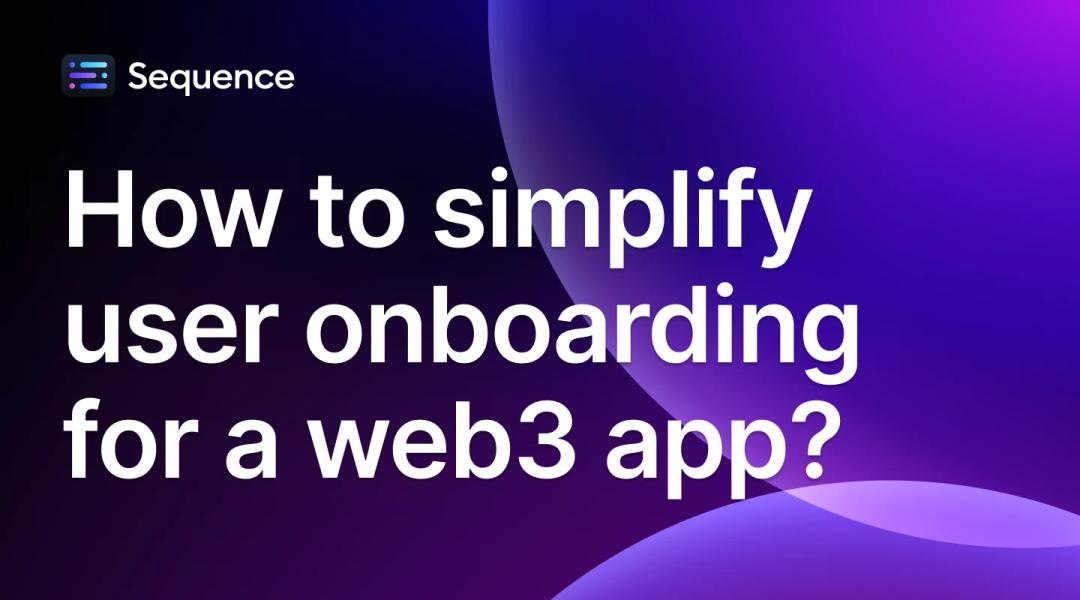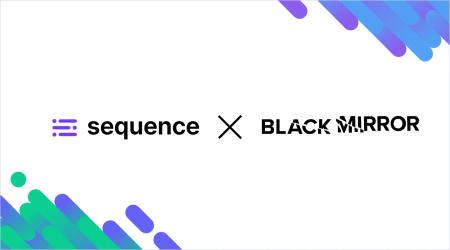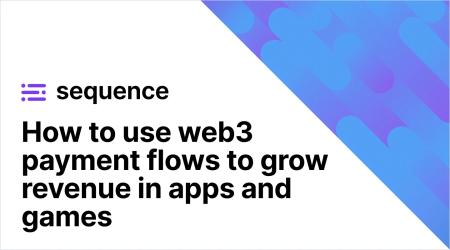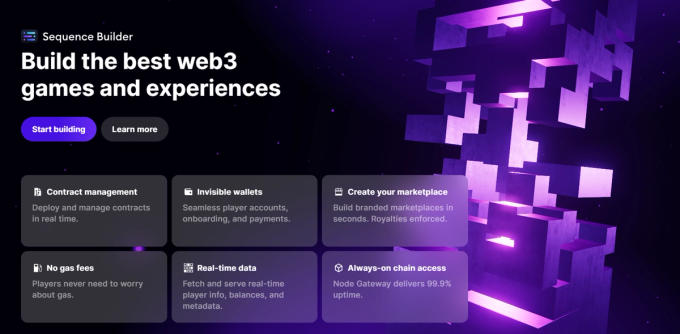How to simplify user onboarding for a web3 app?
May 16 2025

As blockchain technology matures and web3 apps continue to grow in scope, user onboarding remains a persistent challenge. For many new users, their first interaction with web3 can feel intimidating, confusing, and, too often, off-putting. Seed phrases, gas fees, wallet extensions, and unfamiliar jargon can create a user experience that feels foreign to web2. And that’s a problem.
In this article, we’ll walk through the current pain points in web3 onboarding, explore the core principles of intuitive user experience design, highlight successful approaches used by top web3 apps, and finally, outline practical strategies you can implement today to reduce friction in your own experience.
What are the common user onboarding challenges for a web3 app?
One of the most significant barriers to entry in web3 is its (unnecessary) complexity. A typical onboarding flow for a web3 app might involve:
- Installing a browser extension like MetaMask.
- Creating a wallet and storing a 12-word seed phrase.
- Buying or transferring crypto to fund the wallet.
- Understanding the differences between chains, tokens, smart contracts and gas fees.
- Approving transactions via confusing pop-ups.
For “seasoned” users, these steps might seem trivial. For newcomers, this onboarding flow is overwhelming. Any friction at this stage can result in abandonment before engagement — new users are lost before they ever experience the value of your web3 app.
The idea of “you’re responsible for your private keys or your assets are gone forever” also places unnecessary pressure on new users. Unlike traditional web2 apps where forgotten passwords can be recovered easily, the permanence of web3 adds risk that many users aren’t comfortable with.
Couple this with complex UI flows and technical onboarding language, and you have a situation where users lose confidence and interest before any real engagement begins.
Principles for better web3 user onboarding
Seamless web3 onboarding is not just about technical implementation, it’s about empathy. By designing web3 experiences that anticipate potential user anxiety, reduce cognitive load, and prioritize action over explanation, you transform the onboarding process from a hurdle into a catalyst for engagement.
1. Familiarity first. The best onboarding experiences feel familiar. Draw from well-understood web2 conventions: sign-in with Google, Apple, or email, “delayed” registration to let users explore first, and clean UI with actionable copywriting. Instead of reinventing the wheel, design for what users already know. Hide complexity until it’s absolutely necessary.
2. Introduce features gradually. Use progressive disclosure to reveal functionality over time. Let users complete simple actions first, like viewing content or initiating a transaction, before surfacing wallet creation, gas explanations, or other blockchain concepts. This scaffolding builds confidence and makes your app more approachable.
3. Minimize user choices early on. Automatically generate web3 wallets behind the scenes, provide a default option and allow customization later, and guide users toward the simplest path, with the option to opt into advanced features later.
4. Design your onboarding assuming zero crypto knowledge. Avoid using terms like “seed phrase,” “EVM-compatible,” or “sign a transaction” without context. Use plain language and helpful tooltips. Your job isn’t to educate users on blockchain, it’s to help them use your app without needing to know how the technology works.
5. Mobile-first design is key. Many users will first encounter your web3 app on their phone. Wallet creation, login, and interaction should work flawlessly on mobile. Biometric authentication and seamless in-app flows reduce drop-offs caused by poor cross-app experiences. If a user must switch between multiple apps or scan QR codes just to get started, you’ve already lost them.
Tactics to implement seamless web3 onboarding
In web3, great onboarding comes from minimizing friction at every user interaction.
It starts by rethinking the role of web3 wallets. While essential to blockchain interaction, wallets don’t need to be at the forefront. Instead of asking users to install a browser extension or manage a seed phrase immediately, you can programmatically create digital wallets during signup and link them to familiar login credentials like email or social accounts. This shifts the technical burden away from users and lets them focus on using the product rather than setting up infrastructure.
Gas fees are another common source of confusion. Requiring users to understand and pay for gas before completing their first action often leads to app abandonment. A more intuitive approach is to abstract gas altogether, either by using meta-transactions that sponsor fees or by batching operations behind the scenes. By treating gas as an implementation detail rather than a visible requirement, you remove a major blocker from the user journey and allow interactions to feel intuitive and costless.
The same principle applies to blockchain networks. Expecting users to distinguish between Ethereum, Polygon, or BNB Chain creates unnecessary complexity. Users shouldn’t need to know which chain they’re on or about network switching. It should just work. Effective user onboarding uses chain abstraction to consolidate assets across ecosystems, auto-switch networks when needed, and present a unified experience that treats the web3 app as a single environment, not a fragmented collection of technical backends.
At a higher level, onboarding should minimize the time it takes for a user to achieve a meaningful outcome. This could be claiming an NFT, completing a transaction, or accessing exclusive content. The longer this "time to first action", the greater the chance of losing the user to friction or doubt. Use analytics to monitor where users hesitate, drop off, or encounter errors. Identify bottlenecks: unclear instructions, slow wallet load times, or confusing transaction prompts, and refine them iteratively.
In a situation where something does go wrong, how your web3 app responds matters. A failed transaction or a loading error shouldn’t be the end of a user session. Ensure your onboarding flow can fail gracefully: provide clear, human-readable error messages, offer retry mechanisms, and never force users to restart from scratch. Building resilience into the user experience creates trust and encourages users to continue exploring, even if their first attempt wasn’t perfect.
Use cases of web3 user onboarding done right
Web3 gaming: Letting players play first
Many successful blockchain games delay wallet creation until it’s essential. They let users:
- Try the game with a guest account.
- Earn or collect digital items.
- Transition to a wallet once there’s something of value to claim.
One example is Skyweaver, a free-to-play digital trading card game developed by Sequence. Skyweaver adopts a “play-first, wallet-later” approach, removes friction and increases user conversion. The wallet only becomes relevant once the user is onboarded and invested.
NFT marketplaces: buy before you understand blockchain
Some NFT platforms let users purchase assets with a debit or credit card, without needing to understand wallets or gas. They handle all crypto infrastructure in the background. For example, OpenSea, a popular NFT marketplace for brands and creators, allows users to purchase assets before logging into their web3 wallets.
Simplifying web3 onboarding with the Sequence web3 development platform
Designing a seamless onboarding experience in web3 isn’t about dumbing things down, but rather about removing unnecessary obstacles. Users should be able to test out and explore your web3 app without understanding the underlying technology. The experience should be intuitive, fast, and enjoyable from the first click.
While these principles can be implemented in many ways, comprehensive web3 platforms like Sequence make it significantly easier. Sequence provides:
- Instant wallet creation: Users can create a wallet in under five seconds using familiar login methods like email or social accounts, eliminating the need for seed phrases or browser extensions.
- Embedded wallet integration: Sequence Embedded Wallet seamlessly integrates into games and apps, allowing users to interact with web3 features without leaving the application or encountering disruptive pop-ups. It also integrates seamlessly into web, Unity, or Unreal Engine applications using familiar RPC APIs.
- Account abstraction and guest wallets: Sequence enables users to engage with web3 experiences immediately, with the option to link or upgrade their wallets later, providing flexibility and ease.
- Cross-platform and multichain compatibility: Sequence's solutions are designed to work across web, mobile, and console platforms. Sequence Ecosystem Wallets also ensure a consistent and frictionless onboarding experience for users across chains, subchains, and apps across the entire EVM ecosystem.
- Gasless and batched transactions: With a relayer solution, users don’t need to fund wallets before engaging and can send multiple transactions in one go, which simplifies the overall experience and reduces user frustration
- A developer-friendly dashboard that integrates embedded wallets and tracks user behavior to optimize onboarding flows.
By using the Sequence web3 stack, developers can focus on building great web3 apps while ensuring their users enjoy a frictionless and secure web3 experience from day one. Learn how at https://sequence.xyz/solutions/onboard.
Sequence makes building onchain simple. Developers and teams can launch, grow, and monetize apps with unified wallets, 1-click cross-chain transactions, and real-time data, all in a modular and secure stack. No more stitching together fragmented tools or battling poor user flows. Sequence is production-ready infrastructure that helps teams ship faster, onboard more users, and scale confidently. From chains and stablecoins to DeFi and gaming, Sequence powers developers and applications across the EVM ecosystem with billions in transaction volume and millions of users. Trusted by leaders in blockchain, Sequence powers today’s onchain apps and delivers future-proof infrastructure for tomorrow’s breakthroughs. Learn more at sequence.xyz.
Written by

Sequence team
Sequence logoRelated Posts

A short guide that explains exactly what gasless transactions are, and why they matter for your web3 experience.

In partnership with KOR Protocol, Sequence and Msquared, Black Mirror's franchise has launched the $MIRROR token and a new web3 experience!

Web3 payment flows allow any app to embed onchain purchases and interactions in a way that feels natural for users. Learn more about them!

As more applications and protocols move onchain, indexers redefine how dev teams access, organize, and use blockchain data. Learn how!





